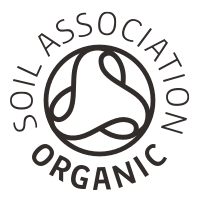
The Nature Pill
In a moment - when you’ve read the next two short paragraphs - close your eyes and allow the space around you to drop away.
Imagine that you are standing on the edge of a large field among broad, tall trees. Feel the crunch of twigs and slight give of grass underfoot. Notice the sweep of the far horizon and nearer, a kaleidoscope of greens dancing in the breeze. Sense that same breeze bringing a gentle chill to the tips of your fingers and ears, and notice the coolness in your nostrils as you breathe in the mildly spiced scent of pines. Take a few breaths, eyes closed, and allow yourself to sink into this imaginary natural world.
Slowly bring yourself back into the present moment, and the room you are in. How do you feel? How is your heart rate? How is your breathing?
Perhaps you feel calmer and more centred than you did before you imagined yourself in nature. If so, that's not surprising. There is a growing body of evidence that backs up our ancient intuitive knowledge that connecting with the natural world - even through our imagination - has a beneficial effect on our physical and mental wellbeing. Indeed, a recent study[1] showed positive impacts on anxiety of the use of guided nature imagery, without needing to be physically present in nature.

Natural Benefits
Being with nature has been shown to increase positive emotions - joy, creativity, concentration and calm. It has also been shown to reduce symptoms of anxiety and depression.
The health benefits don’t stop with our minds. Contact with nature can reduce blood pressure, heart rate, muscle tension and the production of stress hormones. It may also support immune function. Researchers looking into the practice of shinrin-yoku, or forest bathing (an ecotherapy developed in Japan in the 1980s) suspect aerosols from the forests, inhaled during a walk, were responsible for higher than usual levels of Natural Killer cells in the immune system of those who participated in the practice. These NK cells fight tumours and infections.
Research also suggests that the therapeutic impacts of nature may go beyond the individual, and benefit the wider community: encouraging pro-social and pro-environmental behaviour (e.g. eating seasonally, recycling), and reducing crime and aggression. A 2015 study found that more exposure to nature translated into more community cohesion and substantially lower crime rates.[2]
Intuitive knowledge; modern science
Despite a recent explosion of scientific research into this field, it is not new knowledge. We have intuitively understood the wellbeing benefits of nature for centuries, but only in the post industrial world have we needed to bring it into consciousness as a health intervention. Most of our pre-industrial ancestors’ lives would have been intimately connected with nature, without intention or deliberate decision. But with 66% of the world’s population projected to live in cities by 2050, poor mental health increasingly endemic and a highly medicalised, expensive health system, the need to find simple, cost effective public health solutions is becoming increasingly urgent.
Modern science is re-learning ancient ways of being with nature for the wellbeing of our society. Changes are being made to public health, education and planning policy to recentre our relationship to the natural world. Schools are designing in forest schools and green spaces are becoming a core element of urban planning. In 2020, the NHS announced that it would pilot ‘green prescriptions’, where GPs can prescribe nature based interventions for their patients, such as gardening, walking or tree planting[3]: a so-called nature ‘pill’.

Optimal Dose
Scientists believe that they have identified the optimal dosage of that ‘pill’. A 2019 study[4] found that twenty to thirty minutes of contact with nature was found to significantly lower stress markers in participants' saliva. Twenty minutes was enough to see some impact although not in the top range, and the wellbeing benefits continued to accrue after thirty minutes but at a much slower rate. The precise place of the natural environment and time of day were unconstrained in the study, but participants were required to refrain from aerobic exercise, and avoid the use of the internet, phone calls, conversations and reading. In short, they had to be present with nature, without distraction.
Prescribe your own nature pill
The real beauty of the nature pill is that it doesn’t demand a pharmaceutical degree or access to the worlds’ most beautiful scenery to be effective. Nor does it come with side effects, unless you count rejuvenation, peace and vitality. All it takes is a decision to consciously connect with nature on a daily basis. That could be:
- a walk in a park, river or canal if you are in a city, or fields, woods or beaches in more rural areas
- growing your own food, or tending to your indoor plants
- wild swimming or paddleboarding
- simply finding somewhere green, and stopping for a while to rest, or
- when nature isn’t accessible, using guided imagery, memories of nature or even watching nature documentaries.
Key to maximising the impact of your pill (think a similar impact to taking vitamin C to aid the absorption of iron) is the attention you bring to your connection with nature, using all the senses of sight, hearing, taste, smell and touch. See the sun playing in the shade of the trees. Hear the birdsong or wind in the grass. Taste the freshness of the air as you take deep breaths. Smell the fragrance of different plants and flowers. Touch the bark of a tree, stroke a leaf or dip your toes in a stream.
This is a very different mode of attention to that which we need to use in busy cities, or at work, or even scrolling through social media. It is slower, quieter, more spacious. A nature pill allows the attention to unfold in an effortless way, enriching the present moment experience and leading to a relaxed body and mind.

[1] Nguyen & Brymer (2018). Nature-based guided imagery as an intervention for state anxiety. Frontiers in psychology.
[2] Weinstein, Blamford, DeHaan, Gladwell, Brandbury & Amano (2015): Seeing Community for the Trees: the links among contact with natural environments, community cohesion and crime.
[3] https://www.england.nhs.uk/personalisedcare/social-prescribing/green-social-prescribing/
[4] Hunter, Gillespie, Chen (2019): Urban Nature Experiences Reduce Stress is the Context of Daily Life Based on Salivary Biomarkers. Frontiers in Psychology.





